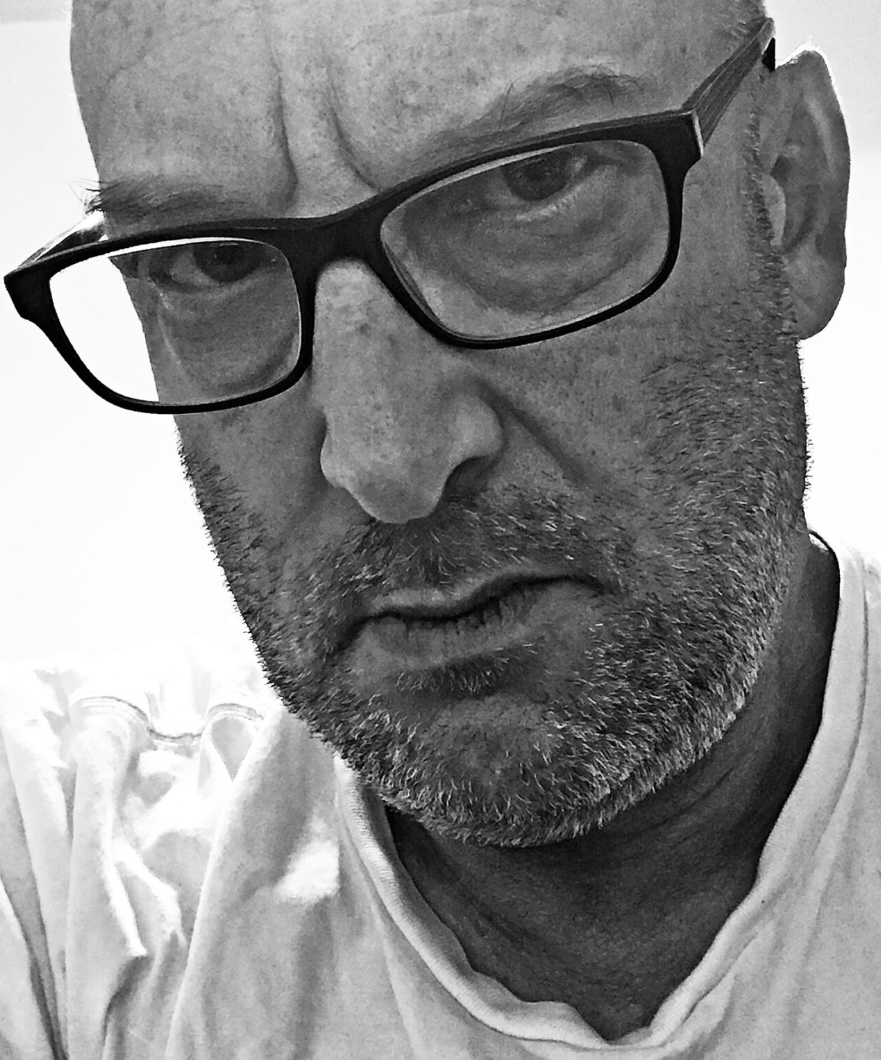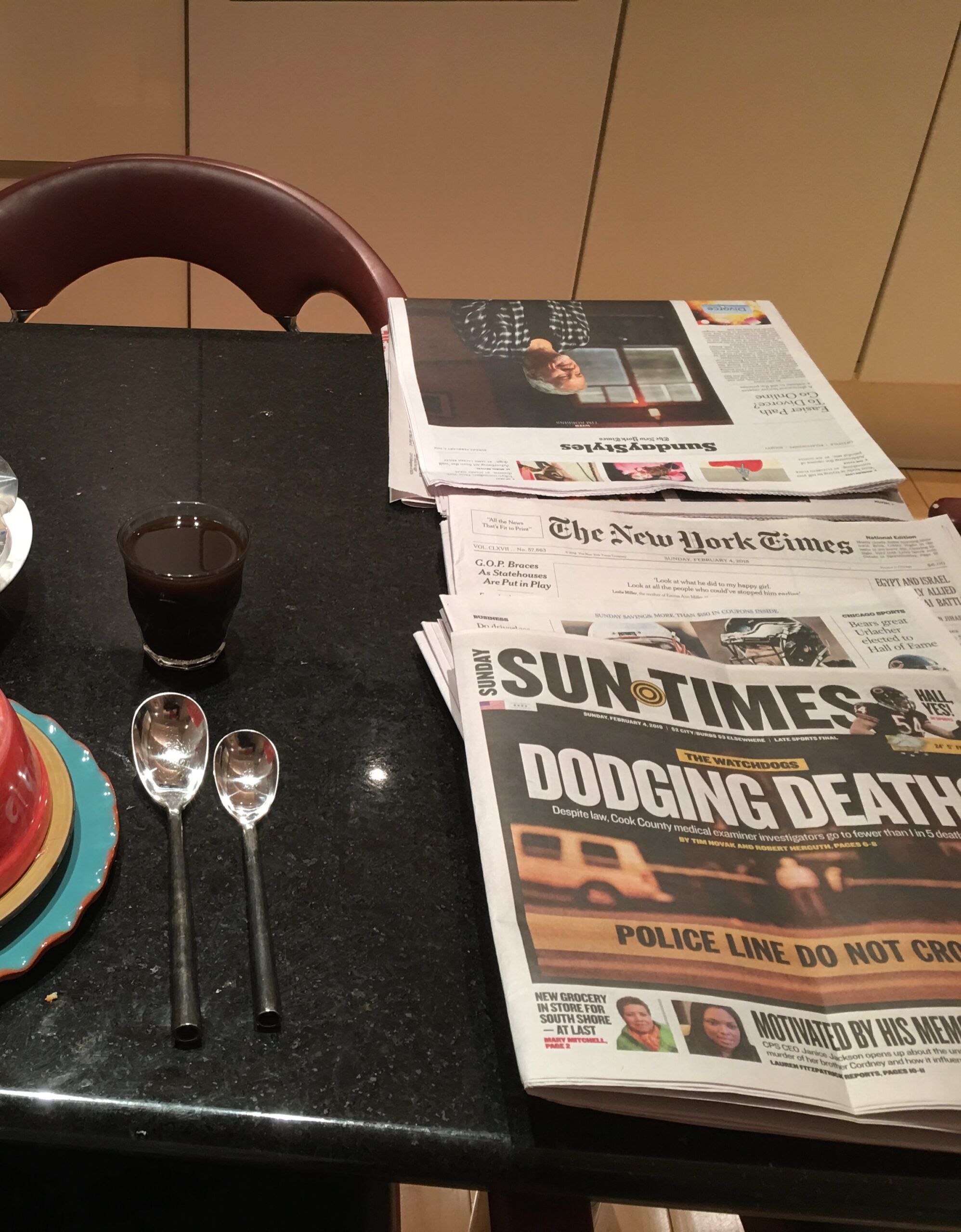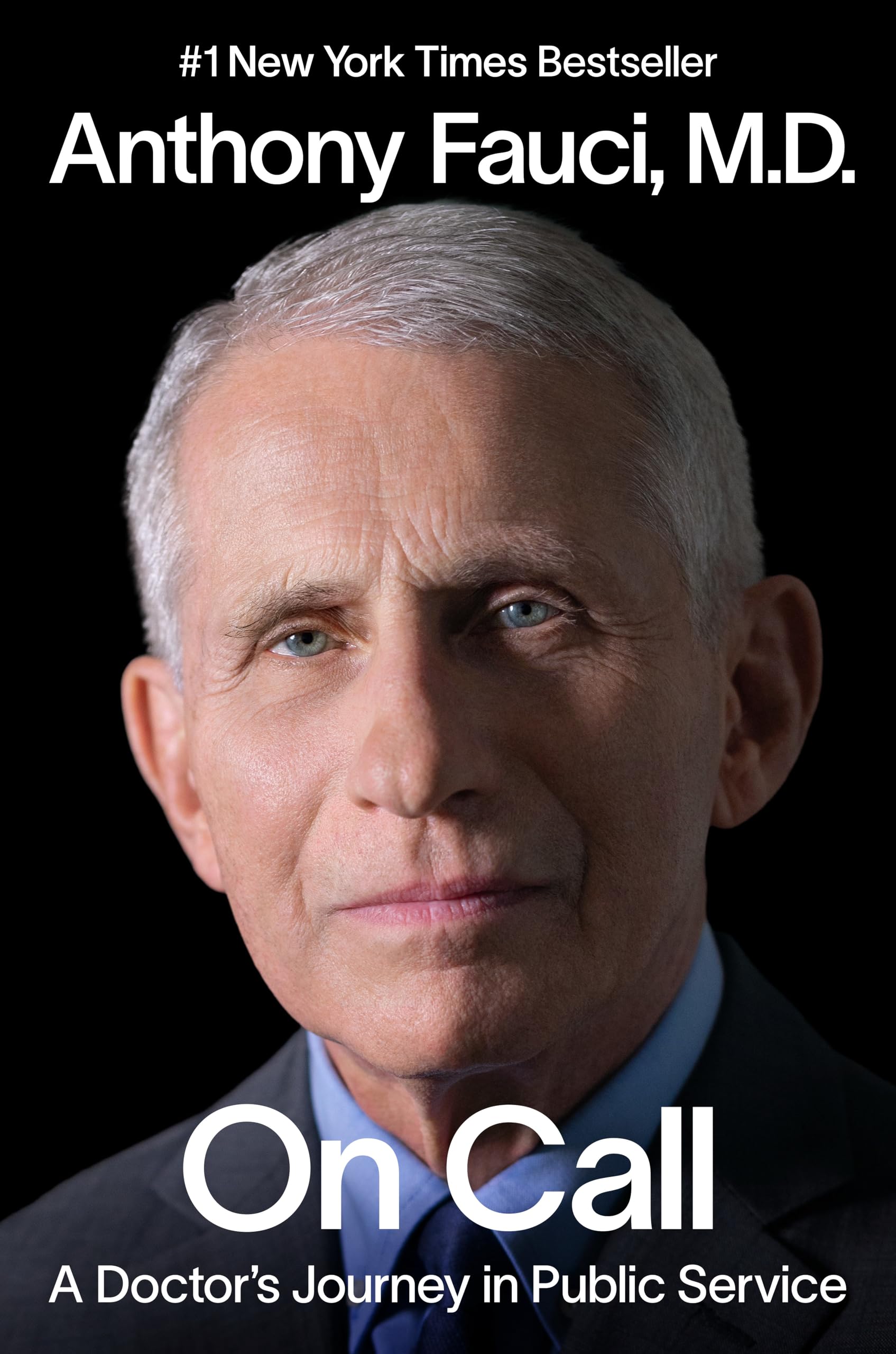By BLAIR KAMIN
This piece is excerpted from Who Is the City For? Architecture, Equity, and the Public Realm in Chicago by Blair Kamin ’79, a guest at Amherst College’s LitFest 2024. Register for this exciting celebration of Amherst’s literary legacy and life.

Looking back on nearly thirty years of architecture criticism at the Chicago Tribune, I realize that I have borne witness to a dramatic transformation of Chicago, from a declining industrial colossus to a dynamic yet deeply troubled postindustrial powerhouse, whose favored emblem is a jellybean-shaped sculpture of highly polished steel. The mirrorlike surface of that sculpture, officially titled Cloud Gate but widely known as “the Bean,” reflects the striking skyline of the city’s ever-growing downtown, now home to $10 million condominiums, Michelin-starred restaurants, and an elegant promenade that rims the once badly polluted Chicago River. But the Bean does not reflect the reality of a very different Chicago. That Chicago, though not without distinguished buildings and untapped economic potential, is also a place of weed-strewn vacant lots, empty storefronts, and unceasing gun violence. Indeed, Cloud Gate may be the ultimate shiny, distracting object. While the 2020 census revealed that Chicago’s population grew by nearly 2 percent during the previous decade, to 2.7 million, the dramatic disconnect between the two Chicagos prompts the question: Is this a good city, a just city? Absolutely not. Which prompts a second query: Can those responsible for building the city advance the fortunes of neighborhoods devastated by decades of discrimination, disinvestment, and deindustrialization? On that crucial matter, the jury is still out.
This book, my third collection of Tribune columns published by the University of Chicago Press, is loosely framed around a central issue of our time: equity. What can architecture, traditionally the province of the rich and powerful, do to make cities like Chicago more equitable, serving poor, working-, and middle-class people, not just the 1 percent? A related question can be asked of the fields of transportation and urban planning, which in the wrong hands have led to such notorious projects as freeways that divide Black neighborhoods from white ones or sever one part of an impoverished neighborhood from another. The question applies, too, to the field of historic preservation. Whose history gets remembered and whose history is erased, either by bulldozers or by willful ignorance?
In short, who is the city for?
Let me start by clarifying that I take equity to mean fairness or justice in the way people are treated rather than the term’s economic meanings—a share of stock or the value of a piece of property after debts are subtracted. This emphasis on fairness has significant implications for architecture and the built environment. One side of town shouldn’t have bigger, more amenity-packed parks than the other just because it’s inhabited by the wealthy. If anything, the poor parts of a city should have the prime parks, because their residents live in far worse conditions than the rich.
That was among the essential points of my 1998 series of articles examining the problems and promise of Chicago’s greatest public space, its nearly thirty miles of beaches, harbors, and parkland along Lake Michigan. The series, “Reinventing the Lakefront,” documented a shameful disparity in acreage, access, and amenities between shoreline parks bordered by mostly white, affluent neighborhoods on the city’s North Side and those lined by largely Black, poor neighborhoods on the South Side. Since then, city agencies and the Chicago Park District have spent hundreds of millions of dollars on the south lakefront, including architecturally ambitious pedestrian bridges and a harbor and marina that welcome parkgoers as well as boats. But any discussion of equity, I argue, should not be limited to apportioning resources fairly or controlling soaring rents.
A wiser alternative, in my view, is to expand and enrich the social meaning of “equity” by borrowing from its economic counterpart, so that, when we use the word, we’re talking about the physical environment that we share. Shared spaces encompass all aspects of the public realm, from sidewalks and streets to transit stations, to public libraries and public housing. Private buildings, be they skyscrapers, flagship stores, or museums, do just as much as, if not more than, public ones to shape the public realm. At best, the public realm can serve as an equalizing force, a democratizing force. It can spread life’s pleasures and confer dignity, irrespective of a person’s race, income, creed, or gender. Shared space suggests shared destiny. Or, to put matters in terms of hard-nosed self-interest rather than empathetic generosity, the recognition that cities are shared ventures—and that the fate of one section of the city is inseparable from another—represents a far more viable long-term strategy than its opposite: containment of the poor, whether in ghettos, public-housing projects, or dysfunctional neighborhoods.
The shootings and thefts that have spread from Chicago’s South and West Sides to the downtown and affluent North Side neighborhoods like Lincoln Park make clear the costs of failing to address the root causes of long-festering problems associated with high concentrations of poverty. No neighborhood is an island, as the shattered glass of North Michigan Avenue storefronts hit by smash-and-grab thieves and the fatal May 2022 shooting of a teenager in Millennium Park near “the Bean” reveal.
To be sure, the notion that Americans can share anything may seem incredibly naive in light of the nation’s deep political and cultural divides, or the way metropolitan areas like Chicago are fractured by chasms of race and class. Indeed, as the columns collected here reveal, the on-the-ground reality in Chicago often falls painfully short of my ideal of urban equity. But the columns also show the power of architecture and urban design to aid the prospects of both communities and individuals.
Revered as the birthplace of modern architecture and for its singular role in the development of modern city planning, Chicago presents a still-relevant stage for analyzing the human impact of the urban drama. Its litany of influential projects spans centuries and has shaped design throughout the world, from the pathbreaking skyscrapers of the 1880s to the triumphant, albeit belated, 2004 opening of Millennium Park. The city’s architecture and urban-design pratfalls, like the demolished public-housing highrises of the Robert Taylor Homes and Cabrini-Green, are as notorious as its exemplary buildings are glorious. As I wrote in my first collection, quoting the urban historian Perry Duis, Chicago is “the great American exaggeration,” expressing at larger scale—and often in excruciating contrast—design trends evident in smaller cities. It gives us the best of the best and the worst of the worst of American urban life, a role it has reprised of late—heroically, with bold new skyscrapers like Jeanne Gang’s St. Regis Chicago tower, the world’s tallest building designed by a woman, and, tragically, with more than eight hundred homicides in 2021, its highest total in decades. By comparison, New York and Los Angeles, the nation’s two largest cities, had a combined total of about 980 killings in the same year.
Like my first two collections—Why Architecture Matters: Lessons from Chicago (2001) and Terror and Wonder: Architecture in a Tumultuous Age (2010)—this one covers a roughly ten-year span. It, too, was tumultuous, though there was no repeat of the September 11, 2001, terrorist attacks, carried out by Islamic extremists, that made the World Trade Center’s twin towers collapse in a heap of smoke and ash. In this case, the terrorism came from within—the January 6, 2021, assault on the temple of democracy, the US Capitol, by pro-Donald Trump insurrectionists trying to overturn Joe Biden’s election. The nation was further jolted by a pandemic that lasted more than two years and disrupted nearly every aspect of life; the racial reckoning that followed the police murder of George Floyd; life- and property-destroying storms and other consequences of worsening climate change; and rising income inequality. All had an impact on architecture and design.
Indeed, one of the decade’s defining characteristics was the growing attention that architects and architecture critics alike paid to social and environmental matters that the field’s tastemakers, with their relentless focus on aesthetics, once deemed marginal. The first Chicago Architecture Biennial, held in 2015, was a signal event, confirming a break from the visually hyperactive, digitally enabled “starchitecture” that dominated the field before the Great Recession. Though sprawling and sometimes unwieldy, the international exhibition nevertheless succeeded in showcasing the socially relevant buildings and visions of a new generation of architects. As the exhibition’s introductory wall text at the Chicago Cultural Center aptly stated, in references to such pressing issues as housing shortages, climate change, and ever-expanding income inequality, “None of these are spatial questions alone, but none can be effectively addressed without design.” The new generation was asserting, in effect, that architects have a significant role to play on these fronts—that they have “agency,” to use the fashionable term.
Which is not to say that architects, landscape architects, and urban planners were always on the side of the angels in these years. All too often, as seen my assessments of new residential high-rises in Chicago, they were capitalists’ tools, draping profitable square footage in ordinary dress. Or they did the progressive thing, and negative, unanticipated consequences followed. Chicago’s 606 trail, the city’s answer to New York’s High Line, brought much-needed open space to the city’s park-poor Northwest Side, but it also encouraged a wave of new luxury housing that displaced some of the very longtime residents the trail was meant to serve. Such outcomes demonstrated that, without careful planning, attempts to correct inequities in one aspect of city life could lead to inequities in another.
Resentment of aldermanic corruption and a widespread recognition that Chicago wasn’t working for all its people led voters in 2019 to back a significant left turn: from the pragmatic centrism of Mayors Richard M. Daley and Rahm Emanuel to the progressivism of Lori Lightfoot, the city’s second Black mayor and first openly gay mayor. Under Lightfoot’s chief planner, Maurice Cox, the drive for equity became systematic rather than sporadic, as it had been under Daley and Emanuel. Cox instituted policies and plans that sought to bring new vitality to ten beleaguered South and West Side business districts. The cornerstone project, the $750 million Invest South/West initiative, wisely didn’t try to turn the clock back to the massive urban-renewal programs of Lyndon Johnson’s Great Society or the public works of Franklin D. Roosevelt’s New Deal. Nor did it rely on the free-market capitalism policies that had gained favor in the Reagan era. Rather, Invest South/West drew on the Chicago tradition of the public-private partnership, attracting abut $1.4 billion in investment to some of the city’s poorest neighborhoods, Whoever Chicago’s next mayor is—the next election is in 2023—the effort deserves to be seen through to completion and, if it succeeds in sparking revitalization, dramatically expanded.
For all its long-term promise, however, Invest South/West confronts daunting short-term realities: heightened gun violence, carjackings, expressway shootings, and the two rounds of looting that followed Floyd’s death. These troubles raise vexing questions: How much of a difference can architecture and urban design make in reviving a city’s fortunes? Without urban order, is urban revival possible? Is it more important to rebuild the structures of broken families and communities than to focus on the structures worthy of an architecture critic’s attention? In the end, both kinds of structures matter. But far too little attention is typically devoted to what architecture can do to building more livable, more equitable cities.
Which brings us to the future and what we might expect from the post-pandemic city. For the foreseeable future, we’re likely to see a continuation of hybrid work arrangements, which means high office vacancy rates that will slow the recovery of downtowns. But in the long run, who knows? Predictions invariably miss the mark; the pandemic’s ever-shifting scourge has consistently defied the forecasts of experts. Ultimately, it’s more important to explore possibilities than to venture predictions; the most pressing task is to respond to the dramatic inequalities that the pandemic has exposed and deepened, particularly the shortage of affordable housing and the need to improve transit and, with it, access to jobs. While the columns in this book assess myriad attempts to address that lack of equity, they are as concerned with processes as they are with outcomes. To achieve equity, architecture and urban planners to design with their ears as well as their eyes, even if that slows the path to winning approval from public bodies and breaking ground. As Jane Jacobs wrote in The Death and Life of Great American Cities, “Cities have the capability of providing something for everybody, only because, and only when, they are created by everybody.”
Who is the city for? Ideally, for everyone, as Jacobs asserts, even if the realities of our polarized present insistently suggest otherwise. Architects and architects of public policy need to broaden the spectrum of people who can afford to partake of city life. They should seek not only to express social diversity; they should find new ways to encourage the diversity of uses that Jacobs so persuasively championed as vibrant alternatives to orderly monotony. They should reimagine and revive pandemic-battered downtowns as well as downtrodden neighborhoods. None of this will be easy amid the clashing priorities that invariably pit one side of town against another. But the city ultimately can be a shared enterprise, its built environment a commonweal that can enrich countless lives, a glue that binds together an ever-more-fractured society. That’s the inclusive, equity-driven direction we must take as we reconsider and rebuilt one of humankind’s great achievements—the city.
In 28 years as the architecture critic of the Chicago Tribune, Blair Kamin ’79 P’15 wrote with clarity and power about all aspects of the built environment, from skyscrapers and museums to parks and public housing. His “activist criticism” not only shaped civic debate but often influenced its outcome, bringing him journalism’s highest honors, including the Pulitzer Prize for Criticism. Inspired by the lectures of Amherst art historian Joel Upton, Kamin graduated in 1984 from the Yale School of Architecture and embarked on a path that led to Chicago, the first city of American architecture. In addition to lecturing widely and being quoted in publications such as The New York Times and The Washington Post, Kamin has authored or edited five books, including three collections of his columns published by the University of Chicago Press: Why Architecture Matters: Lessons from Chicago (2001); Terror and Wonder: Architecture in a Tumultuous Age (2010); and Who Is the City For? Architecture, Equity, and the Public Realm in Chicago (2022). In 2012-13, Kamin was a Nieman Foundation for Journalism fellow at Harvard. His work also has been recognized with honors from the American Institute of Architects and honorary doctorates from Monmouth University and North Central College.




